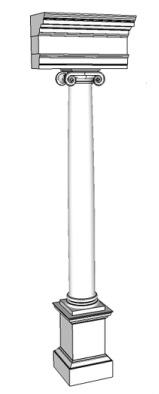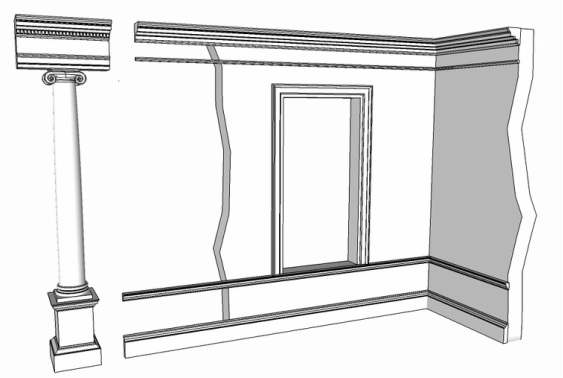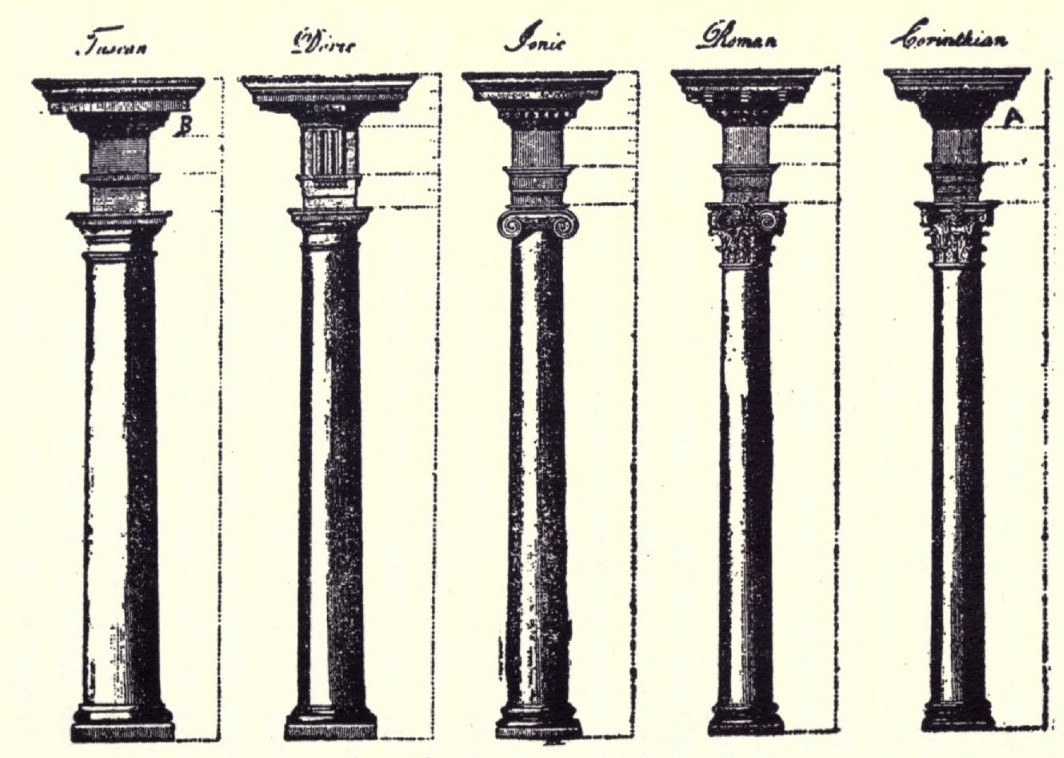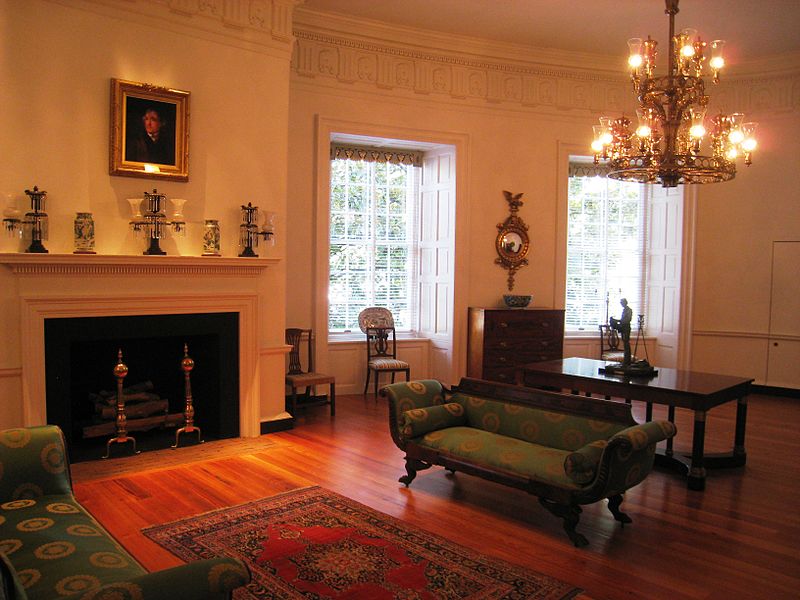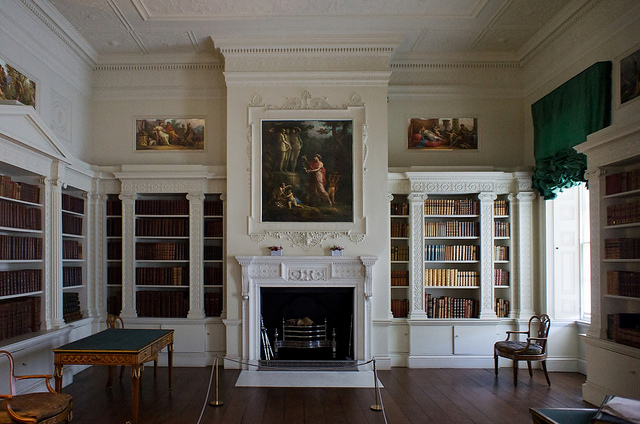The Classical Orders. |
Suggested ReadingBeyond the coffee table.
|
|
A column can be used without its pedestal but must always have a full entablature.
The entablature also has three parts;
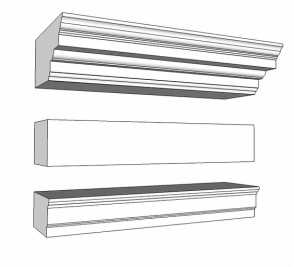
The Cornice The Frieze The Architrave So, 'why do you need to know about all this?'
Most of the ornament and mouldings in a traditional house come directly from parts of a classical order. Although the classical orders come originally from ancient Greece and Rome their modern use was codified during the renaissance. Renaissance architects, such as Leon Battista Alberti and Andrea Palladio wrote treatise or instruction books explaining how to apply the orders and, in many instances, to use them as the unit of scale. This tradition of architects writing treatise continued right up until the advent of Modernism and for designing classically today these books are still our main source.
Types of order
Before selecting the mouldings to decorate a room, or even a building, we need to pick the type of order that we are going to use to proportion it. The type of order will determine the style and feel of the design. The orders themselves are proportioned around the diameter at the base of the column in relation to its height. This means that when they are all the same size the columns with a lower number of diameters/height will appear heavier and stronger! Those with a higher number of diameters/height will look more delicate and refined! There are five classical orders: Tuscan Doric Ionic Composite Corinthian
Here is a table of the orders.
The important thing to note is that;
Examples of their use:
1. I wish to design a drawing room that has masculine feel. Looking at the orders above I can see that I probably want to go for either the Tuscan or Doric orders as they are the most masculine. On further study I pick the Doric order because I want to my drawing room to be masculine but still refined, not rustic as the Tuscan order would convey. (N.B In truth it is somewhat rare to use the Tuscan order on the interior of the house as it is a little to 'heavy' to look right!) I then use the Doric order to determine the shape, size and proportion of all the mouldings for the drawing room. Here is a drawing room where the Doric order has been used: 2. I wish to design a library that has a light and welcoming feel. I don't wish it to be overtly masculine or feminine. Here I might pick the Ionic order because, although traditionally a feminine order, it is actually the comfortable balance between the overtly masculine, Doric and Tuscan, and the resolutely feminine Corinthian and Composite.
I then use the Ionic order to determine the shape, size and proportion of all the mouldings for the library room. Here is a library where the Ionic order has been used; Related articles:The Classically Correct Cornice. How to design a cornice.Skirting Board (Baseboard if you're American.) How to design it. |
Suggested reading photo credit: mendhak via photopin cc
Chambers five orders photo credit: REVIVALthedigest via photopin cc
'Doric' room by Daderot (Own work) [Public domain], via Wikimedia Commons
Ionic library photo credit: Maxwell Hamilton via photopin cc

